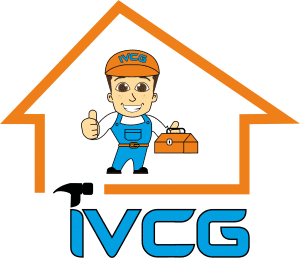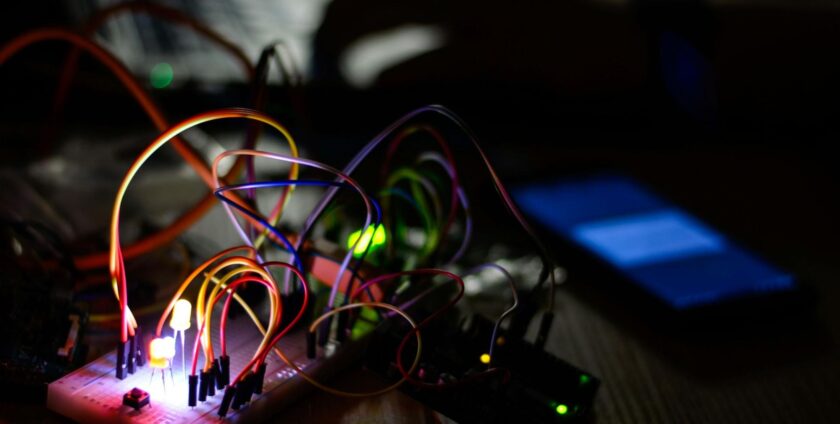
Electrical installation work lies at the core of every modern building – from the smallest residential home to the largest commercial facility. It encompasses the design, wiring, testing, and maintenance of systems that deliver safe, reliable electricity to power lighting, heating, appliances, and communication devices.
Whether you’re building a new home, renovating a property, or upgrading an existing electrical system, understanding what electrical installation involves helps ensure your project meets both Irish building regulations and the highest standards of safety.
In Ireland, all electrical work must comply with the National Rules for Electrical Installations (I.S. 10101:2020), which replaced the previous standard in 2021. These regulations set the framework for safe design, installation, and inspection of electrical systems in domestic, commercial, and industrial environments.
More importantly, they dictate that only registered electrical contractors should carry out such work, which guarantees that all connections, circuits, and components are properly installed and tested.
In the following text you will learn everything you need to know about electrical installation work in Ireland.
What Is Electrical Installation Work?

Electrical installation work refers to any task that involves the setup, modification, or maintenance of electrical systems and electrical devices. This includes everything from the initial design of wiring layouts to fitting outlets, lighting fixtures, fuse boards, and energy-efficient technologies like EV chargers and solar inverters.
Essentially, it covers every element of the electrical equipment that ensures electricity is distributed safely and efficiently throughout a building.
Common services included in installing electrical systems are:
- Full or partial rewiring – upgrading old or unsafe wiring systems to meet current standards.
- Lighting installations – indoor, outdoor, or emergency lighting systems.
- Socket and switch installation – adding or relocating power outlets for convenience and safety.
- Fuse board upgrades – replacing outdated consumer units with modern circuit breakers and RCD protection.
- New build wiring – complete electrical installation work in new homes or extensions.
- Data and communication cabling – setting up internet, telephone, smart-home networks, and any other subsystems installed.
- Heating and appliance connections – safe electricity network for boilers, electric showers, cookers, and heat pumps.
- EV charger installation – fitting electric vehicle charging points compliant with SEAI grant requirements.
- Fire and security systems – smoke alarms, intruder alarms, and CCTV integration.
- Testing, inspection, and certification – ensuring compliance with I.S. 10101 and issuing valid electrical completion certificates.
When performed correctly, these services ensure your home or business runs safely and efficiently – protecting both your property and its occupants from the risks associated with electrical faults.
Why Safe Electrical Installation Matters
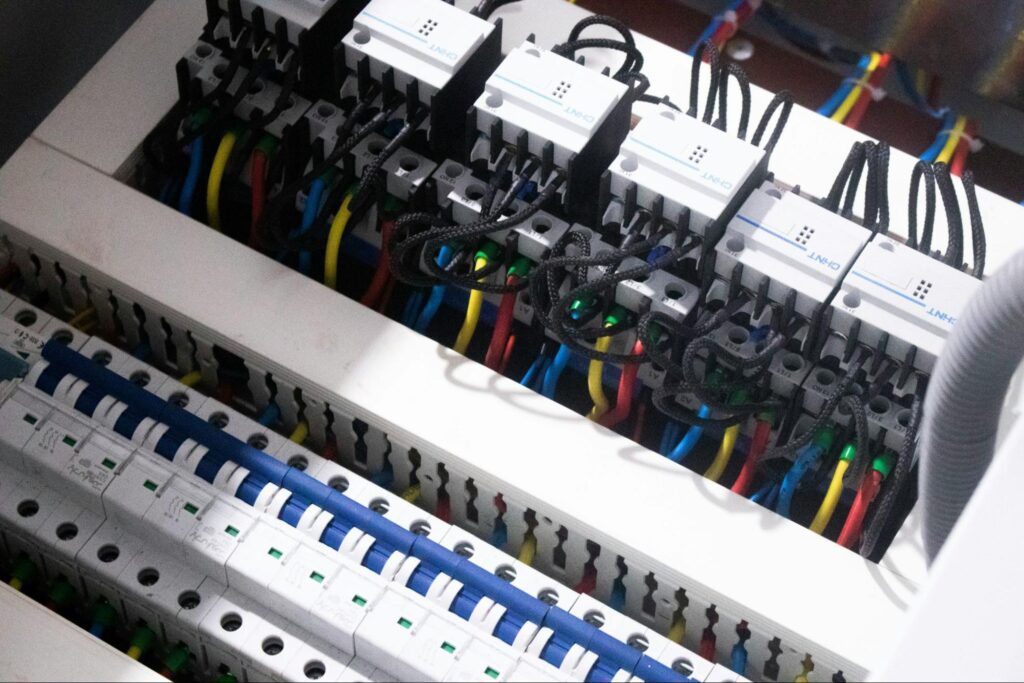
Electrical safety is not just a technical requirement – it’s a critical aspect of property protection and occupant wellbeing. Poorly installed or outdated electrical system can lead to serious hazards such as electric shocks, short circuits, and fires.
A safe electrical installation ensures that electricity flows correctly through the system without overloading circuits or overheating cables. It also helps reduce the risk of damage to expensive household appliances and sensitive electronics.
Modern electrical systems are designed with built-in protection devices – such as RCDs (Residual Current Devices) and MCBs (Miniature Circuit Breakers) – that immediately cut off power in the event of a fault, preventing serious injury or property loss.
Beyond safety, compliance with Irish standards and certification also add long-term value to your home or business. When it comes to property sales or insurance assessments, having proof of a professionally installed and regularly tested system demonstrates both responsibility and compliance – two factors that can positively influence valuation and coverage.
For businesses, safe electrical installation is equally essential. Under the Safety, Health and Welfare at Work Act 2005, employers are legally required to ensure that all electrical systems in the workplace are properly maintained and safe to use. Failure to comply with these regulations can result not only in costly downtime but also in legal and insurance implications.
Ultimately, investing in safe electrical installation is an investment in peace of mind – knowing that your property is protected, efficient, and compliant with the latest safety standards.
Electrical Installation Based on Property Types
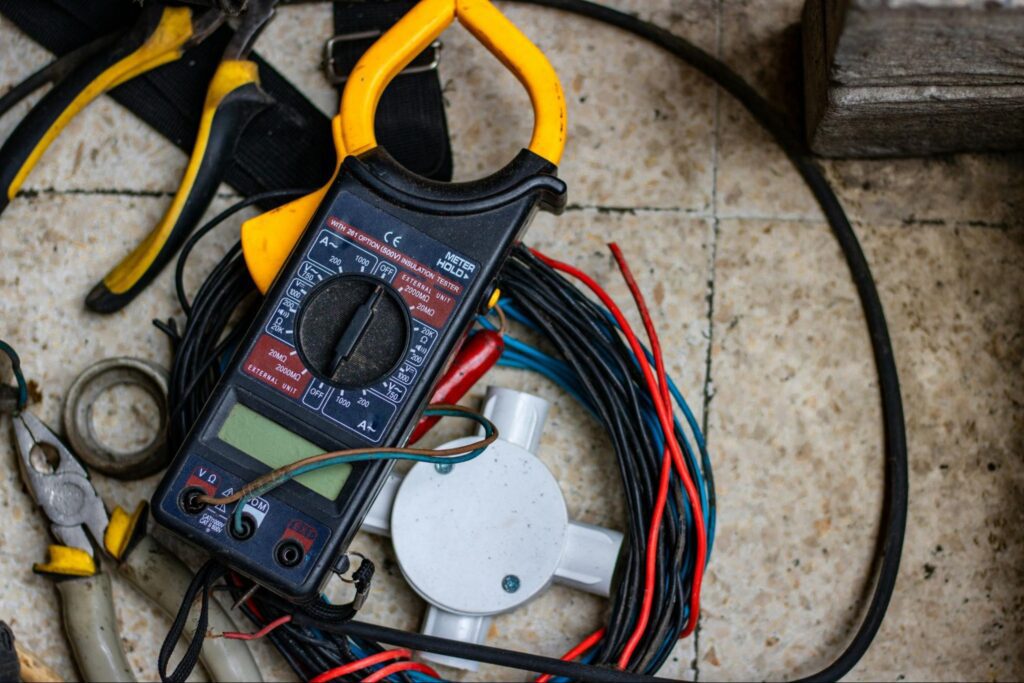
Not all electrical installations are the same. The design, components, and safety measures vary significantly depending on the type of property – whether it’s a residential home, a commercial unit, or an industrial facility.
Understanding these distinctions helps ensure that each environment receives the right level of power distribution, protection, and efficiency.
Residential Electrical Installations
In homes, electrical systems are designed with comfort, safety, and energy efficiency in mind.
Residential work typically involves:
- Wiring for lighting, sockets, and appliances;
- Consumer unit (fuse board) installation and upgrades;
- Smoke and carbon monoxide alarm systems;
- Outdoor and garden lighting;
- Electric shower and cooker connections;
- EV charger installation;
- Smart home integrations (heating controls, security systems, etc.).
Domestic installations must comply with I.S. 10101:2020 standards and be carried out by Safe Electric-registered contractors. After completion, a Completion Certificate must be issued, confirming the system meets all safety and regulatory requirements.
Commercial Electrical Installations
Commercial buildings – such as offices, retail units, restaurants, or hotels – demand more complex electrical layouts due to higher energy use and varied load requirements.
Key aspects include:
- Three-phase power systems for larger equipment;
- Emergency lighting and fire alarm systems;
- Structured data cabling for IT networks and communication;
- Energy-efficient LED lighting design and control systems;
- Backup power or UPS (Uninterruptible Power Supply) systems;
- Periodic inspection and testing for compliance with Health and Safety Authority (HSA) regulations.
Because of the higher footfall and public use of these spaces, commercial installations require stricter testing and maintenance routines. Regular inspection certificates ensure compliance with both electrical safety regulations and insurance requirements.
Industrial Electrical Installations
Industrial settings – such as factories, workshops, and production facilities – operate under the highest electrical loads and strictest safety conditions.
Installations here involve:
- Heavy-duty three-phase circuits;
- Control panels and distribution boards;
- Machinery and equipment connections;
- Earthing and bonding for high-voltage systems;
- Explosion-proof fittings in hazardous areas (e.g. chemical plants);
- Power factor correction systems for energy efficiency.
Industrial electrical work is governed by rigorous standards, with mandatory reports and adherence to safety guidelines. These ensure that systems can safely handle intensive, continuous operation without power outages or electrical hazards.
Each property type has unique needs, but they all share a common goal – a safe, efficient, and compliant electrical system that delivers reliability and long-term performance.
Key Phases of the Electrical Installation Process
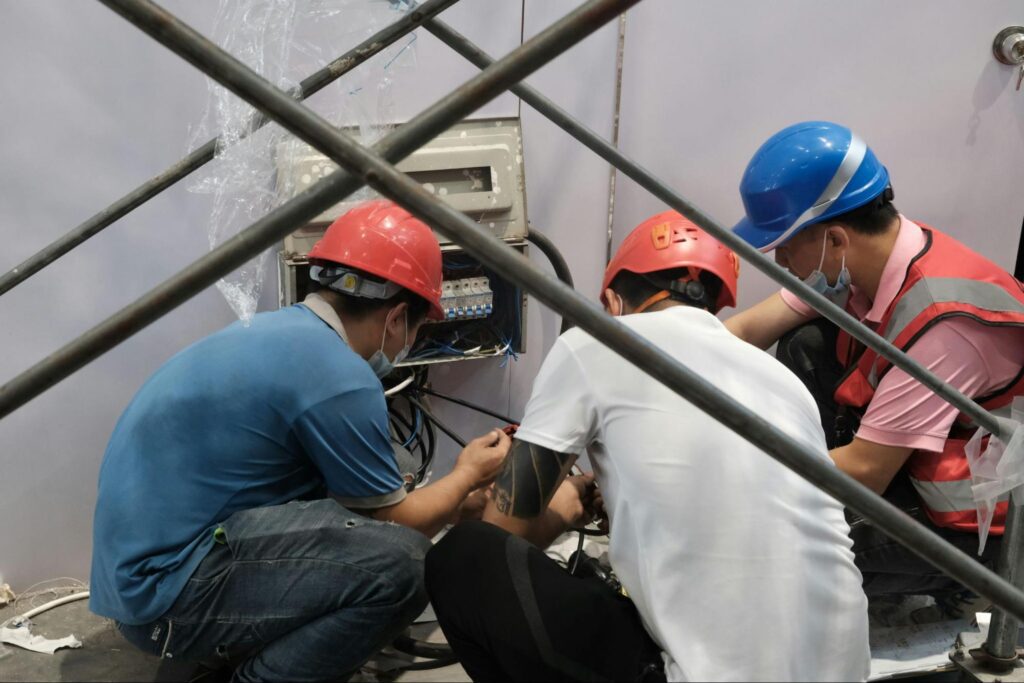
Whether it’s a new electrical installation build, renovation, or commercial fit-out, every electrical installation follows a structured sequence of steps. Each phase plays a vital role in ensuring that the system is safe, efficient, and fully compliant with Irish standards.
1. Planning and Design
The process begins with a detailed assessment of the property’s electrical requirements.
Electricians create a design plan that includes circuit layouts, load distribution, lighting positions, and socket placement. For larger projects, this phase also involves coordination with architects, engineers, and builders to integrate electrical systems into the overall construction design.
The goal is to ensure that all wiring routes, types of electrical cables, and protective devices are correctly specified before installation begins.
2. First Fix (Rough-In)
During this stage, electricians install all wiring, conduits, various electrical devices and back boxes before the walls are plastered or closed up.
Cables are run to outlets, switches, lighting points, and distribution boards. Safety considerations – such as earthing and bonding – are applied to protect metalwork and reduce the risk of electric shock.
This phase forms the foundation of the entire system, so precision and adherence to the approved design are essential.
3. Second Fix (Final Connections)
Once walls, ceilings, and floors are finished, the electrician returns to connect sockets, switches, lighting fixtures, and appliances.
Consumer units (fuse boards) are fitted and labelled. Testing is carried out to verify that each circuit operates correctly.
Any smart systems or special controls (for heating, lighting, or security) are programmed at this stage.
4. Testing and Certification
Before any system can be energised, it must undergo a full inspection and testing procedure. This includes continuity checks, insulation resistance, RCD operation, and polarity verification.
Once passed, the electrician issues a Certificate of Completion, which is then submitted to Safe Electric Ireland for verification. This certificate confirms that the installation complies with national safety standards and may be required by insurance companies, mortgage lenders, or local authorities.
5. Handover and Maintenance Guidance
Finally, the client receives a detailed explanation of how their system operates – including fuse board labelling, safety features, and maintenance recommendations.
For commercial or industrial clients, this often includes a maintenance schedule and guidance for periodic inspections to maintain ongoing compliance with HSA regulations.
Together, these five phases ensure that every electrical installation – from small domestic rewiring to large industrial projects – is planned, executed, and verified with safety and precision at its core.
Who Is Qualified to Perform Electrical Installation Work?

Electrical installation work is not a DIY task. In Ireland, only certified and registered professionals are legally permitted to carry out electrical installations, testing, or modifications.
This ensures that all electrical systems meet strict national safety standards and that the work is fully traceable, inspected, and insured.
Registered Electrical Contractors (RECs)
The only individuals or companies authorised to perform regulated electrical work in Ireland are Registered Electrical Contractors (RECs). These professionals are approved by Safe Electric, the statutory regulatory body operated by the Commission for Regulation of Utilities (CRU).
RECs are qualified to:
- Design, install, test, and certify electrical systems in accordance with I.S. 10101:2020;
- Issue official Certificates of Completion, which confirm that installations are compliant and safe to connect;
- Carry out maintenance, repairs, and periodic inspections;
- Ensure compliance with Health and Safety Authority (HSA) requirements for workplaces.
To maintain registration, electrical contractors must undergo regular audits, continuing professional development (CPD), and inspections by Safe Electric to ensure their work remains up to standard.
Unregistered or Unqualified Work: Legal and Safety Risks
Hiring someone who is not a registered contractor can lead to serious consequences.
These can include:
- Safety risks – faulty wiring, fire hazards, and electric shock.
- Legal issues – electrical work performed by unregistered persons is illegal under Irish law.
- Insurance implications – insurers may refuse claims if an incident arises from unregistered or uncertified work.
- Property sales – uncertified installations can delay or block property transactions.
Always verify your electrician’s registration status before work begins.
You can easily confirm this through the Safe Electric online register, which lists all licensed contractors in Ireland.
Specialist Certifications
Some installations – such as electric vehicle chargers, solar PV systems, and commercial fire alarms – require additional specialist qualifications. Homeowners planning these upgrades should ensure their contractor is trained and certified for the specific technology involved, as grant applications often require proof of qualified installation.
Choosing a registered and experienced electrician protects your property, your safety, and your investment. It also guarantees compliance with Irish electrical and building regulations – giving you peace of mind that your system has been installed to the highest professional standard.
Tips on Maintaining a Safe Electrical System at Home
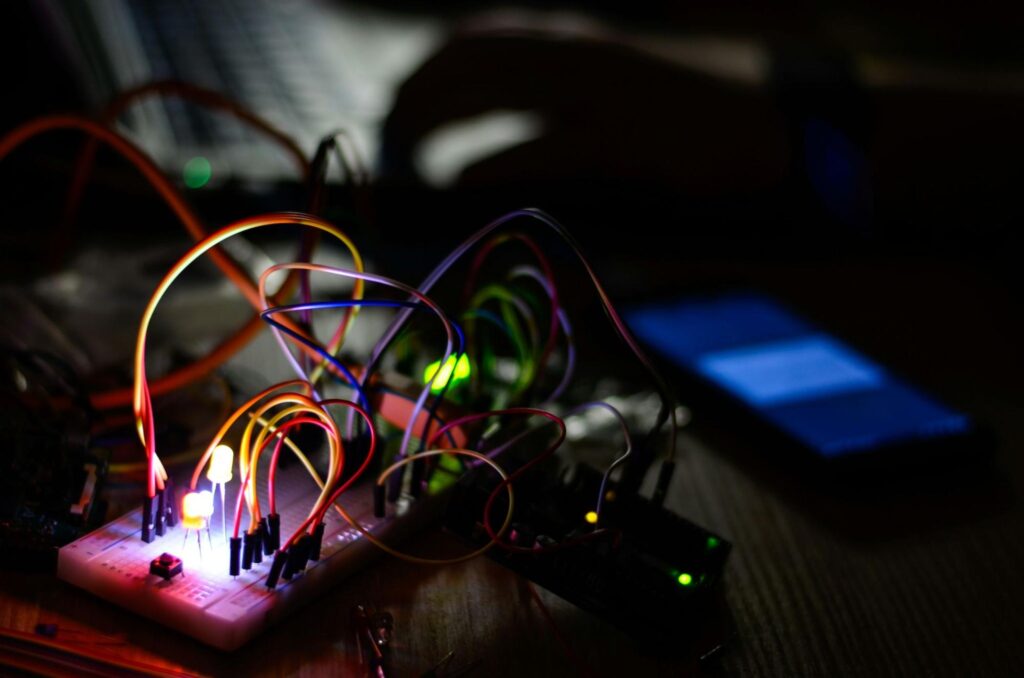
Even the best electrical installations need regular attention to remain safe and efficient. Over time, components can wear down or become overloaded – especially in older homes or high-use areas.
Follow these key tips to protect your property and prevent electrical hazards:
- Schedule regular inspections – have a Registered Electrical Contractor (REC) check your system every 5–10 years, or more often in older homes. Regular inspections identify wear, loose connections, and outdated components before they pose a risk.
- Upgrade outdated systems – replace old fuse boards, ungrounded sockets, or fabric-insulated wiring. A modern consumer unit with RCD protection (Residual Current Device) instantly disconnects power in case of a fault, dramatically improving safety and efficiency.
- Avoid overloading circuits – don’t plug multiple high-wattage devices into one outlet or daisy-chain extension leads. Use surge-protected extensions, and if breakers frequently trip, ask a professional to install additional circuits.
- Watch for warning signs – flickering lights, buzzing noises, warm outlets, or burning smells often indicate underlying electrical issues. Treat these as urgent warnings and contact a qualified electrician immediately.
- Maintain your appliances – check plugs and cords regularly for fraying or exposed wires. Unplug small appliances when not in use, and replace any damaged or faulty devices promptly.
- Install smoke and carbon monoxide alarms – ensure alarms are correctly wired, tested monthly, and have backup batteries. Replace units every 10 years or as advised by the manufacturer.
- Keep electrical records – store all Safe Electric Completion Certificates, inspection reports, and warranty documents. These provide essential proof of compliance for insurance, property sales, and maintenance planning.
A few simple habits can make a big difference. Regular inspections and timely upgrades not only reduce risks but also keep your home’s electrical system performing efficiently and safely for years to come.
Frequently Asked Questions
What qualifies as electrical installation work?
Electrical installation work covers any activity involving the design, fitting, alteration, or maintenance of electrical systems – including wiring, sockets, lighting, fuse boards, and electrical appliances. It also includes testing, certification, and upgrades to ensure compliance with I.S. 10101:2020, Ireland’s national wiring rules.
Can I do minor electrical work myself?
No. In Ireland, only Registered Electrical Contractors (RECs) certified by Safe Electric are legally permitted to perform regulated electrical work. Even minor changes, such as installing sockets or lighting circuits, must be inspected and certified. DIY electrical work can void insurance coverage and pose serious safety risks.
How often should I have my electrical system inspected?
Homeowners should arrange a professional inspection every 5-10 years, depending on the property’s age and usage. Rental and commercial properties require more frequent checks, often every 2-5 years, in accordance with HSA and housing regulations.

